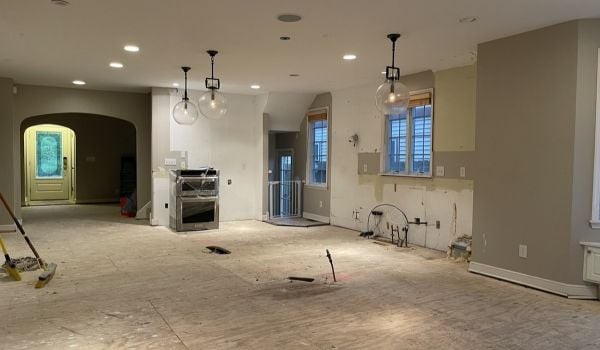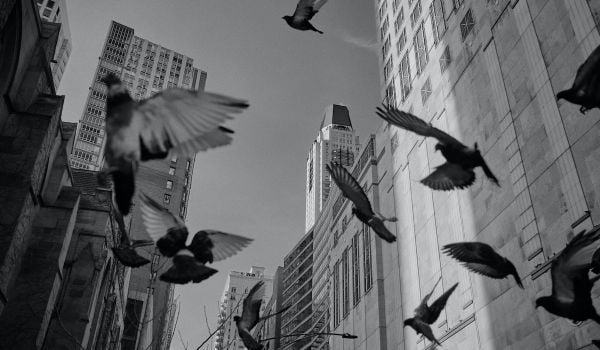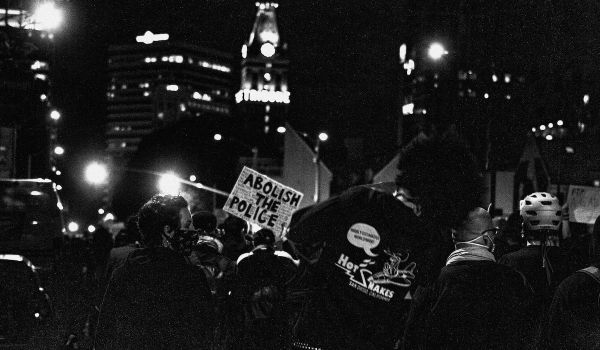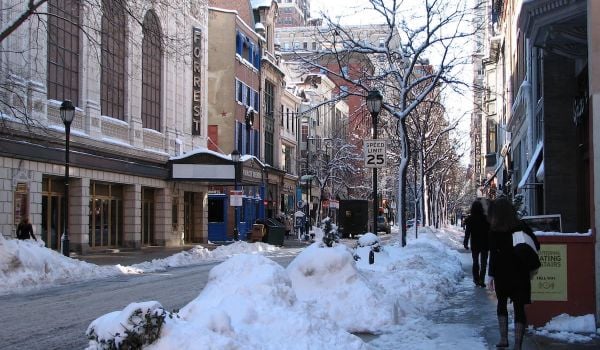Bruner Silver medal winner The Community Chalkboard, is in front of City Hall in Charlottesville, Va. The monument is a two-sided wall of slate, a chalkboard, on which community members can write whatever they like. The monument also includes a podium, which acts as a soapbox for public gatherings. Designer Pete O’Shea answered a few questions about the project.
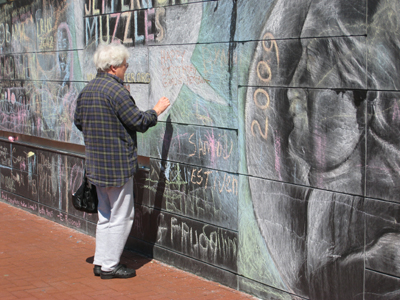
The Community Chalkboard in Chalottesville, Virginia.
What has the reaction been to the Community Chalkboard? Who were the advocates and who were the naysayers?
In general the reaction has been overwhelmingly positive. Judging by the sheer volume of use it is certainly being actively engaged by the community. As expected, there are advocates and opponents and there have been since the idea first became public over ten years ago. The idea was intentionally provocative and intended to spur debate and discussion, which it has. A wide diversity of people have emerged as advocates for the project and include teachers, artists, and, interestingly, people that are often more aware of the potential limitations on their right to free speech (teenagers yet unable to vote, immigrants from less tolerant societies, etc.). People have described to me a sense of feeling compelled to right on the board or to at least read what is there if they are passing by.
Are there any limits to what can be written on the wall (hate speech, etc)?
Any type of expression protected by the First Amendment is allowed. Overt threats and other types of speech that is not protected by the First Amendment are not allowed on the wall, as they are limited in society in general.
What kind of social impact has the installation had on downtown Charlottesville?
Social impacts have been considerable and are part of a broader project within which the monument project sits. The site of the project has been transformed from a roadway to an extension of the downtown pedestrian mall, with a new amphitheater and a transit center, that along with City Hall frame a plaza within which sits the Community Chalkboard and Podium. The combination of these projects has transformed what was a side street into a primary civic space that has generated a significant increase in daily use and has created a place for art installations, performances, demonstrations, public markets and a variety of other public events.
Did the blackboard end up with unexpected uses…ones that you didn’t foresee? Any serendipity?
It is such a simple idea that it seems to communicate a clear set of uses to the public as we expected. People have generally used the wall and surrounding space as we had hoped. The most exciting uses have been art installations that we had hoped for but could never have imagined the exact details of. There have been some really interesting installations/art events that have claimed not only the wall, but the entire space around the wall and have included sculpture, projections and performance. It has become the de facto community space for all manner of debate, demonstration and public announcement.
How are you going to use the Bruner Award?
The award will support ongoing efforts to create interdisciplinary programming around the monument and the idea of free expression. It will also help us to form a separate non-profit entity purposed with developing community programs that will occur throughout the year. Our first program is set to start in a few weeks and is called “Story Line”. We will be working with community partners from the Charlottesville Parks and Recreation, The Piedmont Council on the Arts and The Bridge Progressive Arts Initiative. The project will include an exploration of a set of urban neighborhoods in Charlottesville by 4th, 5th and 6th graders who live there along with community volunteers, poets and mural artists. This will culminate in a collective mural on the Chalkboard that tells the story of their explorations and of their neighborhoods to the rest of the city. Afterwards we will be cataloguing the work and putting together an exhibition.

